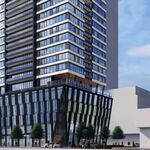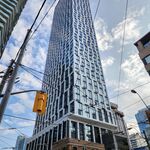emphurent
Active Member
As someone who doesn't drive much and prefers transit, I find the large gas stations downtown to be quite scary to walk by due to the traffic. They serve a vital purpose with their convenience stores, but they take up way too much space for their purpose.
With all the downtown stations (rightfully) being redeveloped, I was wondering when we'd start seeing "urban" compact style stations (especially from the gas giants). While not exactly streetside like in Paris, 132 Harbord (which was an old auto repair station) will soon be home to one of the city's first compact gas stations. It's about a third of the size of the average downtown stations but still features the same amenities. While still not perfect (could use some landscaping), it's a step in the right direction for how we should be thinking about gas stations, I just hope this doesn't suddenly inspire 50 to pop up on prime development land.
I would appreciate if anyone wants to chip in with other compact examples from this city or any other city that should serve as a model.
(Source)

With all the downtown stations (rightfully) being redeveloped, I was wondering when we'd start seeing "urban" compact style stations (especially from the gas giants). While not exactly streetside like in Paris, 132 Harbord (which was an old auto repair station) will soon be home to one of the city's first compact gas stations. It's about a third of the size of the average downtown stations but still features the same amenities. While still not perfect (could use some landscaping), it's a step in the right direction for how we should be thinking about gas stations, I just hope this doesn't suddenly inspire 50 to pop up on prime development land.
I would appreciate if anyone wants to chip in with other compact examples from this city or any other city that should serve as a model.
(Source)




